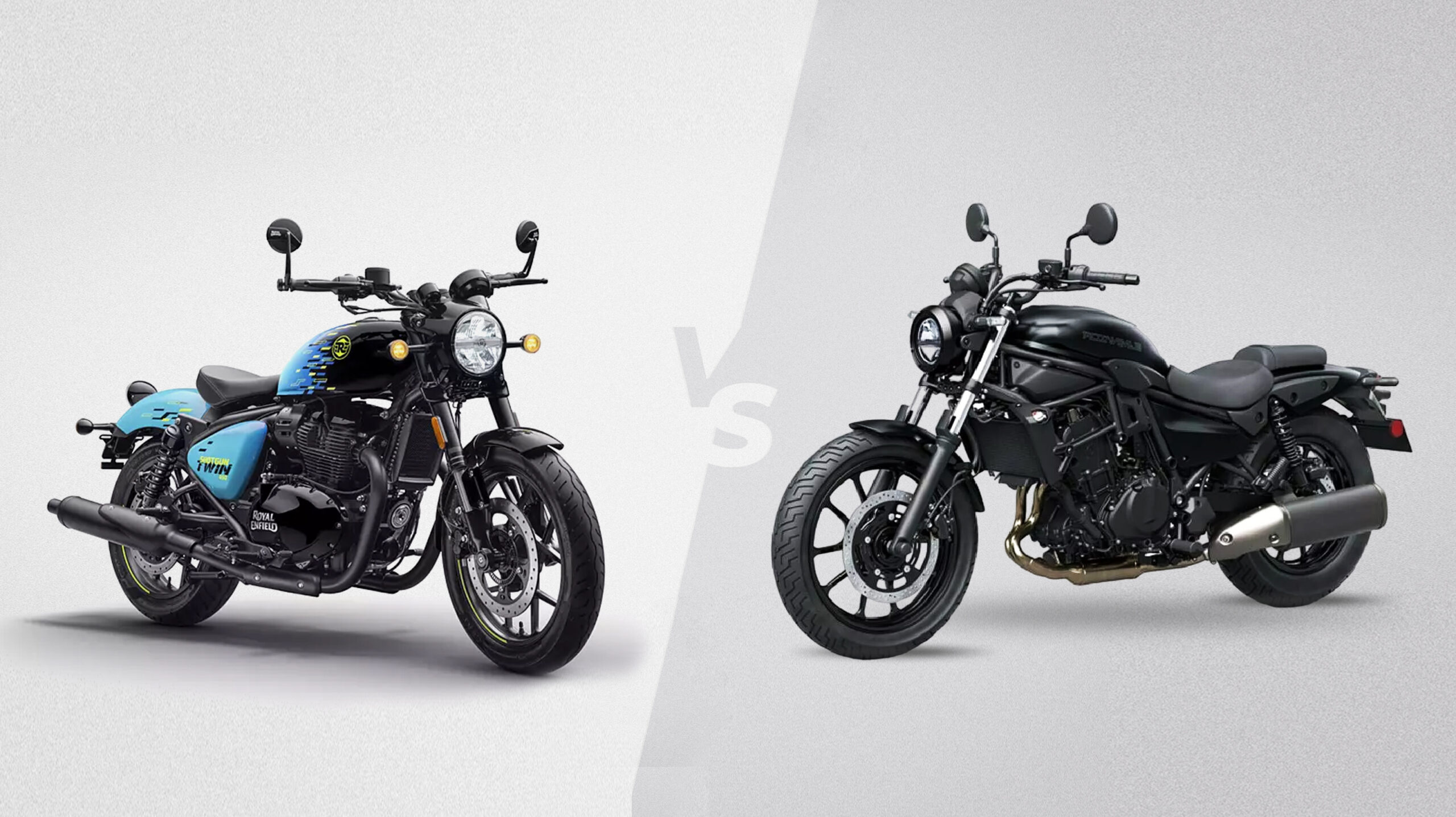Kawasaki Eliminator vs Royal Enfield Shotgun 650: Japan’s leading bike manufacturer Kawasaki has launched its powerful cruiser bike Kawasaki Eliminator in the Indian market. The company had introduced this bike in June, 2023. Its delivery is expected to start after January 15.
In the country, this bike will compete with Royal Enfield Shotgun 650, which was introduced only last month. Let us understand from the comparison which of these bikes is better for you.

Kawasaki Eliminator vs Royal Enfield Shotgun 650: Looks
Talking about design, Kawasaki Eliminator is built on a tubular frame. It has a swooping teardrop shaped fuel tank, comfortable low seat height, wide handlebar, an upswept exhaust system and mid-set footpegs.
The bike will be provided with a digital instrument console and it also has an all-LED setup for lighting. To make its look even more attractive, blacked-out alloy wheels have also been added to it.
On the other hand Royal Enfield Shotgun 650 has got a retro look. It has round headlights, split seats, round taillights with turn indicators and dual P-shooter exhaust system.
It features a teardrop-shaped fuel tank, rear-swept handlebar and rear-set footpegs. It also has a digital instrument cluster that supports Bluetooth with smartphone connectivity and turn-by-turn navigation. All-LED setup, USB charger and designer alloy wheels are also available in the latest bike.
Kawasaki Eliminator vs Royal Enfield Shotgun 650: Engine
In Indian market, the eliminator comes with 451cc parallel-twin liquid-cooled engine. This engine is capable of generating maximun power of 44 bhp at 9000 rpm and 47 Nm torque at 6,000 rpm. This engine is paired with 6-speed gearbox and also equipped with slipped clutch.
Royal Enfield Shotgun 650 uses a 648cc parallel-twin, air and oil-cooled engine, which can generate maximum power of 47hp and peak torque of 52Nm. The engine of the bike is paired with a 6-speed gearbox to simplify the transmission.
Kawasaki Eliminator vs Royal Enfield Shotgun 650: Performance
If reports are to be believed, Kawasaki Eliminator bike can cover a distance of 15 kilometers in one liter of petrol and can run at a top speed of 195km/h.
Shotgun 650 bike can run with a top speed of 210 kilometers per hour. Also, it will give a mileage of 20-25 kilometers in one liter petrol.
Kawasaki Eliminator vs Royal Enfield Shotgun 650: Features
New eliminator bike has digital instrument system which offers features like bluetooth connectivity, clock, odometer, 2 trip meter, speedometer, tachometer, fuel gauge. For rider safety and to provide excellent handling on the roads, the latest bike, the new Kawasaki Eliminator, has been provided with Anti Lock Braking System (ABS), Switchable Traction Control, 3 riding modes and disc brakes on both the wheels.
To make the suspension comfortable, it has been provided with 3100mm telescopic fork at the front and 220mm petal disc brake at the rear and gas-charged twin shock absorber at the rear.
Royal Enfield bikes are known for their powerful features. For the safety of the rider, the latest bike Royal Enfield Shotgun 650 has disc brakes on both the front and rear wheels.
They are also available with Dual Channel Anti Braking System (ABS) for better handling during braking. Keeping in mind the suspension, the bike has been given inverted forks at the front and two-way springs system at the rear end.

Kawasaki Eliminator vs Royal Enfield Shotgun 650: Better option
Royal Enfield Shotgun 650 bike can be launched at a starting ex-showroom price of Rs 4 lakh. The new Kawasaki Eliminator bike has been launched for Rs 5.62 lakh. 5 years warranty is being given in both these bikes.
Even though the Kawasaki Eliminator is a stronger bike and has a more premium look, our vote goes to the Royal Enfield Shotgun 650 due to its affordability and powerful engine.
Also Read: Royal Enfield Sales Report Of December 2023, YoY Sales Decline By 7 Percent




